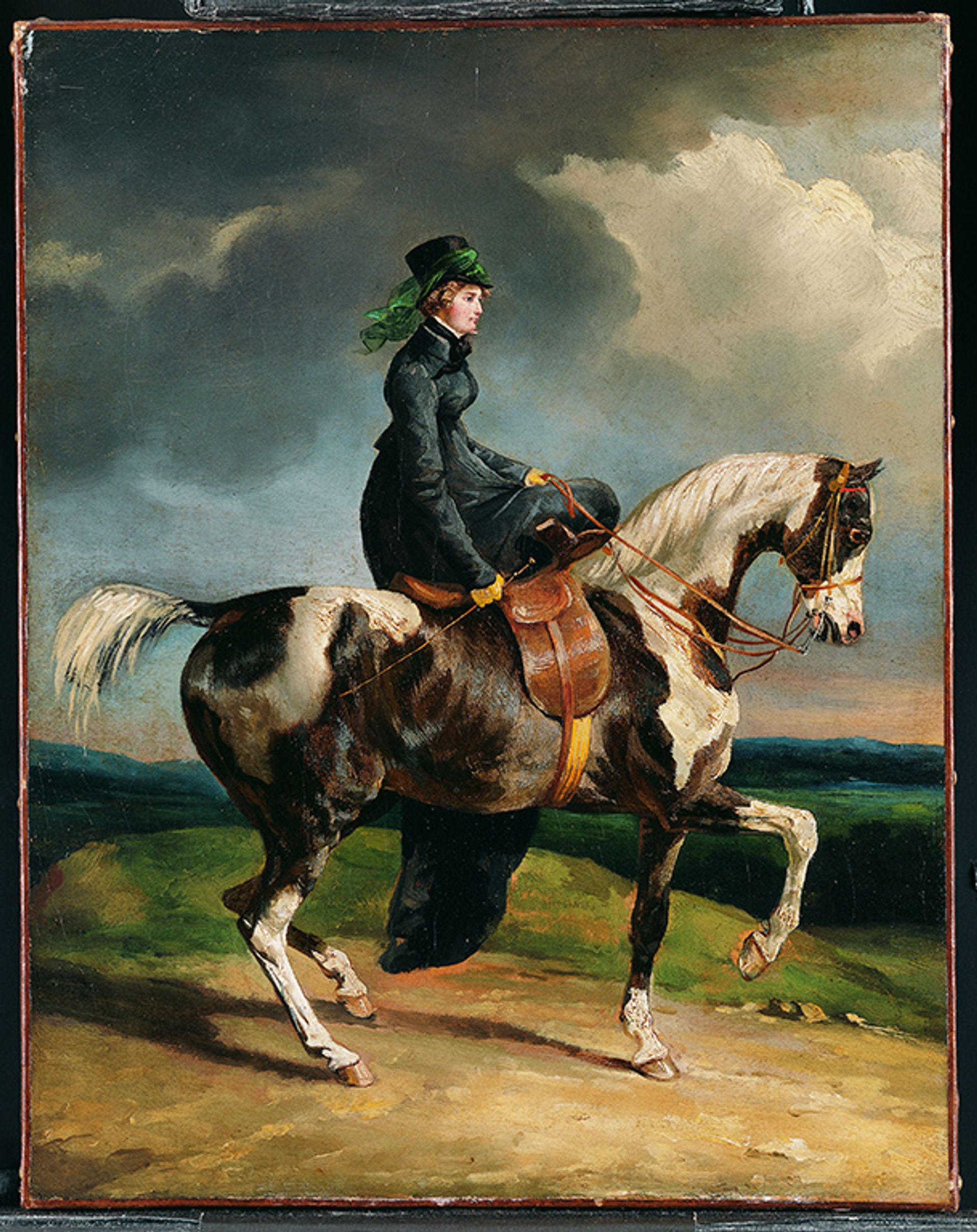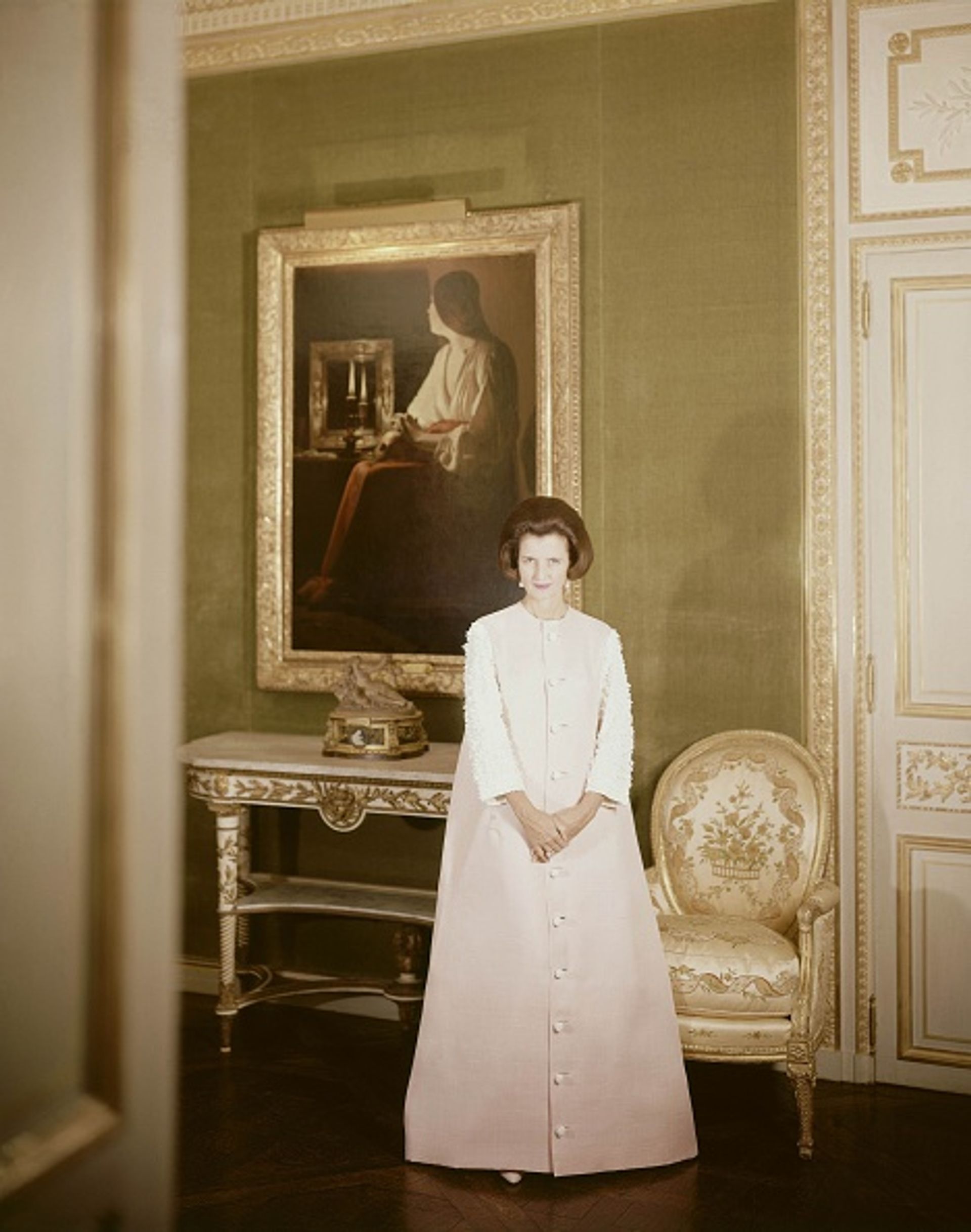She was already one of the most important patrons in the history of the Metropolitan Museum of Art. But it turns out that the New York collector and philanthropist Jayne Wrightsman had yet another gift in mind for the museum: a bequest of more than 375 works of art and $80m in funding to support further acquisitions.
Announcing the “exceptional” bequest today, seven months after the New York socialite’s death at age 99, the Met said that a selection would go on display at the museum on Friday, including 22 paintings by Canaletto, Delacroix, Géricault, van Dyck, Tiepolo, Seurat and others; a portrait on paper of Marie Antoinette by Élisabeth Louise Vigée Le Brun; “exquisitely bound” rare books; and 55 small objects ranging from a pair of 17th-century Italian porphyry urns to an 18th-century French porcelain inkstand in the form of a pomegranate.

Théodore Géricault's Horsewoman, from around 1820 or later Metropolitan Museum of Art, New York, Bequest of Mrs. Charles Wrightsman in honour of Mercedes Bass
In a statement, the Met’s president and chief executive, Daniel H. Weiss, described Wrightsman and her husband, the oil magnate Charles Wrightsman, who died in 1986, as “model patrons and standard bearers for a generation of donors”. He added: “Their legendary eye for art was exceeded in magnitude only by their unwavering dedication to the Met’s collection, galleries and staff.” The museum's director, Max Hollein, said, "The Met would not be what it is today without Jayne and Charles Wrightsman."
Over a period of decades the Wrightsmans, both of whom served as Met trustees, donated more than 1,275 works of art to the museum. Between 1975 and 1997, Jayne Wrightsman also served as a member and later as chairman of the museum’s acquisitions committee, relying on her extensive travel and study to fill in perceived gaps.
Keith Christiansen, the chairman of the department of European paintings at the Met, said that the museum had known for years that the works in the bequest would be forthcoming. Some were “pictures that she really loved as part of her living quarters” and therefore chose to keep until her death, he added, like a van Dyck painting “hanging over the sofa in the small study where she would meet with friends”.
For the Met, the top highlights of the bequest include that van Dyck, Queen Henrietta Maria (1636)—an “outstanding portrait” of the Roman Catholic consort of Charles I that was a gift to the Italian cardinal Francesco Barberini—and six paintings by Canaletto that “transform us into being one of the major collections” of that artist, Christiansen said. Previously the museum had just one work by Canaletto, which was given by Wrightsman in 1988.
The museum said that the bequest also included gifts to the departments of European sculpture and decorative arts, Asian art and Islamic art as well as the Watson Library.

Jayne Wrightsman in front of Georges de la Tour's painting The Penitent Magdalen from her collection, now housed in the Met Photo by Cecil Beaton/Condé Nast via Getty Images
The collector also made provisions in her bequest for a “substantial” amount of money to flow into an existing Wrightsman Fund to support acquisitions from Western Europe dating from 1500 to 1850, the Met said. So far the museum has received $80m from the bequest and more is due to be disbursed. Income generated by that fund has already enabled the museum to purchase works “of great importance”, it noted.
This largesse has flowed from the Wrightsmans for more than 60 years. Memorably, Jayne and Charles Wrightsman oversaw an initiative in the 1960s and 70s to enhance the museum’s French period rooms, filling them with 18th- and 19th-century French furniture, clocks, lamps, mirrors and wall paneling that had in some cases graced the lodgings of Louis XV and Louis XVI. Jayne Wrightsman’s Fifth Avenue apartment boasted what some called the finest collection of French decorative arts in the US.
Christiansen says he first entered the apartment in 1977 as a young curator who had just been hired by the Met. “She invited me over for lunch—that’s what she normally did to get to know the new curators,” he recalls. Eventually he would be invited to “wonderful dinners” where “she got people together who were compatible, with like interests. She was great at running a kind of salon.”
Asked if he had a favourite among the many paintings donated by Wrightsman, Christiansen cited a Venus and Cupid by Lorenzo Lotto from the 1520s that was purchased as a result of a gift from the collector. “It was a picture that I was charged with researching to explain, because the action in the picture—of Cupid peeing on his mother—was something that nobody had seen in other Renaissance paintings,” the curator said with a laugh. “She enjoyed that, she loved that, and when my article came out, she wrote me a note.”


